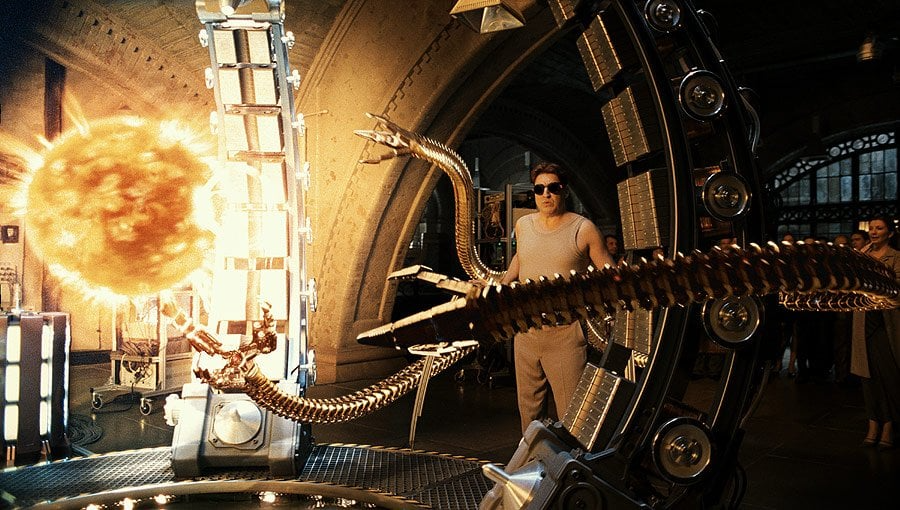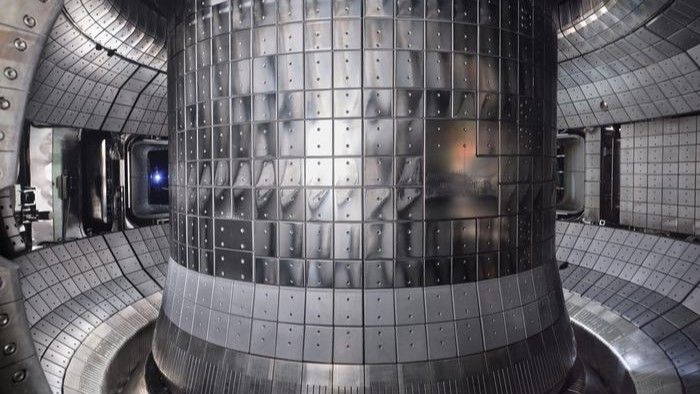48 seconds. I predict a glut of helium. balloons for everyone
Hotter than the surface of the sun by a factor of ~18000.
Hotter than the suns core by a factor of ~7.
https://science.nasa.gov/solar-system/temperatures-across-our-solar-system/#hds-sidebar-nav-1
People talk about Icarus flying too close to the sun. Motherfuckers are recreating it in labs 😂

I just want to know what kind of thermometer they put into the plasma to measure the temperature. It must have been made of ice or something to not burn up.
They usually measure extreme high temperatures differently, not with thermometers based on heat expansion of materials. They measure heat radiated, not conducted.
In plain English, they look at it with a heat camera, like you see on TV they patrol borders with.
…Icarus was a primitive savage from ancient times…he didn’t have our cool cyberpunk tech
I’d love to see an operating fusion reactor in my lifetime. Real sci-fi technology
Currently reading news and communicating with people around the world from the privacy of my toilet using my hand terminal. It can also understand what I am saying and excecute my spoken commands (to some extent at least). That’s some Sci fi shit right there. Pun intended
Nice. Let’s use it for shit posting and spreading misinformation
Porn, don’t forget porn. So much porn
It’s seriously insane growing up on star trek and then seeing it come to life.
Still holding out for flying cars.
And warp drive!
I’m waiting for the post-scarcity stuff 😭
I don’t want flying cars because I don’t want 95% of the people around me to be driving regular cars. Can’t even use a turn signal and now they have carte blanche to drive over houses and shit?
The answer is mass transit. Mag-rail, not personal aviation.
Yeah, motherfuckers can’t even drive in two dimensions. Adding a third would be a clusterfuck of galactic proportions.
I am quite positive I’ll see reliable, sustained fusion reactions in my lifetime.
I’m also pretty positive it’ll be useless as an energy source. Still could be useful for other things though.
I’m also pretty positive it’ll be useless as an energy source.
Why? Honestly curious.
I don’t think we’ll get to the point where the energy that comes out will be higher enough than the energy put in to justify its use compared to other energy sources.
I don’t think we’ll get to the point where the energy that comes out will be higher enough than the energy put in to justify its use compared to other energy sources.
They also used to say Man will never fly.
Technically, just give it time. Politically, that’s a whole other matter.
They also used to say Man will never fly.
Sure… I’m not saying fusion will never happen (it already does of course) or even that it’ll never be net positive for energy.
Just that, for energy it’s looking to be worse than most other options.
So I’m not saying man will never fly, I’m saying something closer to flying cars won’t happen. It’s not that we couldn’t do it, just that the alternatives are better.
just that the alternatives are better.
I’m not sure how you can judge that, against something that doesn’t exist yet.
I’m not sure how you can judge that, against something that doesn’t exist yet.
Simply based on past and current trends. The advancement curve on fusion would need to really step it up and if we say that it can, then we also need to accept the same is possible for the alternatives which means fusion still lags behind.
Fusion would need to be extra special somehow, and from what’s happened so far, it seems less special than the rest if anything.
Naturally this is all speculative of course, and being wrong on this is great either way as one way or another we will continue to get better at getting energy.
48 seconds at those temperatures is no joke, that is pretty amazing. I didn’t see the article elaborate on what the current limiting factors are for pushing beyond 48 seconds. Like I wonder if it’s a hard wall, a new engineering challenge, a tweak needed, etc. this is the reactor that set the last record so they are doing something really right.
(The article touches on this bit a little) I was watching something about fusion the other day and it seems that it is super tricky to keep the magnetic field balanced in a way that keeps the plasma in a proper toroid. Not only does it need to keep the correct strength, it has to fight against random turbulence. This is critical to start the reaction, but also to maintain it.
Also, they gave some other physical limitations in the article as well:
To extend their plasma’s burning time from the previous record-breaking run, the scientists tweaked aspects of their reactor’s design, including replacing carbon with tungsten to improve the efficiency of the tokamak’s “divertors,” which extract heat and ash from the reactor.
Basically, it’s the container that has limitations as containing a pseudo-sun probably isn’t easy.
According to another commenter the heat generated is 7 times that of the core of the sun. Considering we use the sun in sci fi to destroy anything that can’t be destroyed by other means, controlling that level of heat seems like a real challenge
Yeah. Actually using that heat is the next challenge, I suppose. If I am not mistaken (and I am often mistaken), they are not actually using the reaction to power the reactor yet.
It’s all math, basically. If they measure more energy coming out than they put in, it’s considered a win.
How would they use it to power a reactor? Is it like a regular nuclear reactor where you essentially boil water to power a steam turbine?
I swear a part of my inner child died the day I found out that nuclear reactors are essentially big kettles.
It’s likely going to create steam, just like a reactor today. It is a very effective way to turn a turbine for a generator, after all. All the bits that actually start and maintain the reaction need fuck tons of electricity, so the reaction can literally power itself when attached to a generator.
While there are a ton of formulas for converting energy from heat, to steam, to mechanical energy and then into electricity, it’s all basically the same: more power out than you put in is a good reaction.
Almost forgot, water is dual function. It cools the equipment and it acts as an energy transport. I believe ammonia is more efficient in some circumstances, but water is better for obvious reasons.
One day we will break that record and nobody will ever know again.
Is… is that good?
Edit: it is!
From what absolutely little I know, yes. Sustaining the reaction at such high temps for long is, as of now, difficult.
Yeah, I decided to actually bother and read the article. That’s why I made my edit. This sounds like a very important technical milestone for the development of fusion reactors. Hooray!
when talking about fusion, just think the conditions of stars/the sun. In order to function correctly, it has to be ridiculously hot.
The race for fusion is how to maintain it, and eventually have a net positive transaction of energy out, to energy in ratio.
just think the conditions of stars/the sun
Hotter than the sun. The sun has an enormous gravity pushing things along. To compensate we use more heat.
I thought we used magnetrons and such, and the excessive heat was due to current inefficiency and control of the fusion process in containing the heat and it building up higher and higher.
The heat is needed so atoms collide enough to fuse without the high pressure inside a star. The trick is keeping the reaction going.
Sorry im not any sort of scientist here but i thought energy could not be created or destroyed so to get a net-positive energy out we would need to keep feeding in fuel, is this correct?
And if so, how?energy is not created nor destroyed, however something can change forms, which gives off energy.
how stars work in fusion is that their high pressure and high temperatures allow for the fusion of particles. hydrogren (1 protonl fuses with another to produce helium (2 protons). in a stars life, that cycle continues. elements fuse till it hits iron (the end point of fusion). which then a stars life.is considered dead and eventually black hole stuff starts to happen due to density of star.
the power is actually not “infinite” its limited by the fuel supply available (hydrogren), but the net energy in to energy out is positive if the fuel source exists.
Yes but how do you keep feeding this kind of reaction? I imagine you cant just drop more fuel ‘down a tube’. Do they shut down the reactor and then restart it with fresh material?
I assume they shoot the fuel in with some light particle acceleration. Maybe they just let it diffuse in, but it’s a gas so it’s not that hard to get it to enter.
The hope is they get the cost of maintaining the electromagnets (power and cooling) to be cheaper than the power we can extract from the reaction.
My question is more about what’s the logistics of getting power out? We’re making a lot of heat, so it’s probably steam power at the heart of it, but a lot of this effort is to keep the heat in is it not?
I’d like to know more. How do you actually harness the energy produced by temperatures that high? Is the end goal to figure out how to sustain the reaction at lower temperatures or do we actually have ways to generate electricity from those temperatures without losing most of it to waste?
Almost as hot as the temperature my wife leaves the shower at.
Fusion triple product:
the duration the thing worksxinverse of how close you are to melting the reactor vesselxhow large is the reactor vessel100 million degrees C
Sounds hot.
Sounds hot.
You should see it in a bikini.
Nah. Not that hot. Now 100 million kelvin, THAT is hot!
C is hotter than K, and F is a mess.
That doesn’t sound like cold fusion.
Because it actually works?
Where do you see it being called cold fusion anywhere?
Can’t wait for fusion reactors to not be thing for another 50 years at the very least.
Better in 50 years than never
Hot damn! Limitless fusion power is only thirty years away!
Breakthroughs will bring in investment and then things can accelerate if it ends up viable.
Like it has been for the past 30 years (which, I assume, was the joke here.)
If fusion research was funded adequately we’d probably have it by now, but I don’t know if it’s the energy lobby or what that means that it’s chronically underfunded. An actually working fusion reactor design would bring about such an upheaval in the energy markets that I wouldn’t be surprised if plutocrats had a hand in making sure the research receives orders of magnitude less money than it should.
The faster I get my steak the better
Can’t be good for our global warming problem, amirite?
Lol ironic isn’t it, considering easy access to fusion power would basically solve the climate crisis.
If you had a bunch of fusion plants running AC units could you reverse global warming?
Ignoring actual practicality… I guess you could run a heat exchanger and dump all the energy into a tiny object then shoot it into space
Not the timezones!
Soooo, we will all start sounding like Alvin and the Chipmunks soon?


















